A summer retreat for over 1,000 years, Tivoli, Italy, hosted ancient Romans and the Renaissance elite in its rolling hills just 20 miles from Rome. Its historic residents have made Tivoli famous, and the town is now home to two UNESCO World Heritage Sites.
On our most recent Italian adventure, we had the chance to leave Rome for the day to visit the sites. First up was Hadrian’s Villa–the massive estate of Emperor Hadrian–and then Villa d’Este, a lavish 16th-century villa with spectacular gardens and endless fountains. Both of these Italian landmarks are well worth the visit.
Hadrian’s Villa in Tivoli, Italy

The Romans are known for their grand monuments. In a place truly built for an emperor, Hadrian’s Villa (also known as Villa Adriana) redefines luxury. The sprawling complex is much more than what we might think of as a “villa.” It covers nearly 300 acres with a variety of buildings, including palaces, libraries, baths, guest quarters, and more, along with numerous water features.
All of this was accomplished in just 15 years from 118-133AD. Though it was originally designed to be Hadrian’s retreat from Rome, he vastly preferred this location in Tivoli and used it as the seat of government in his later years.
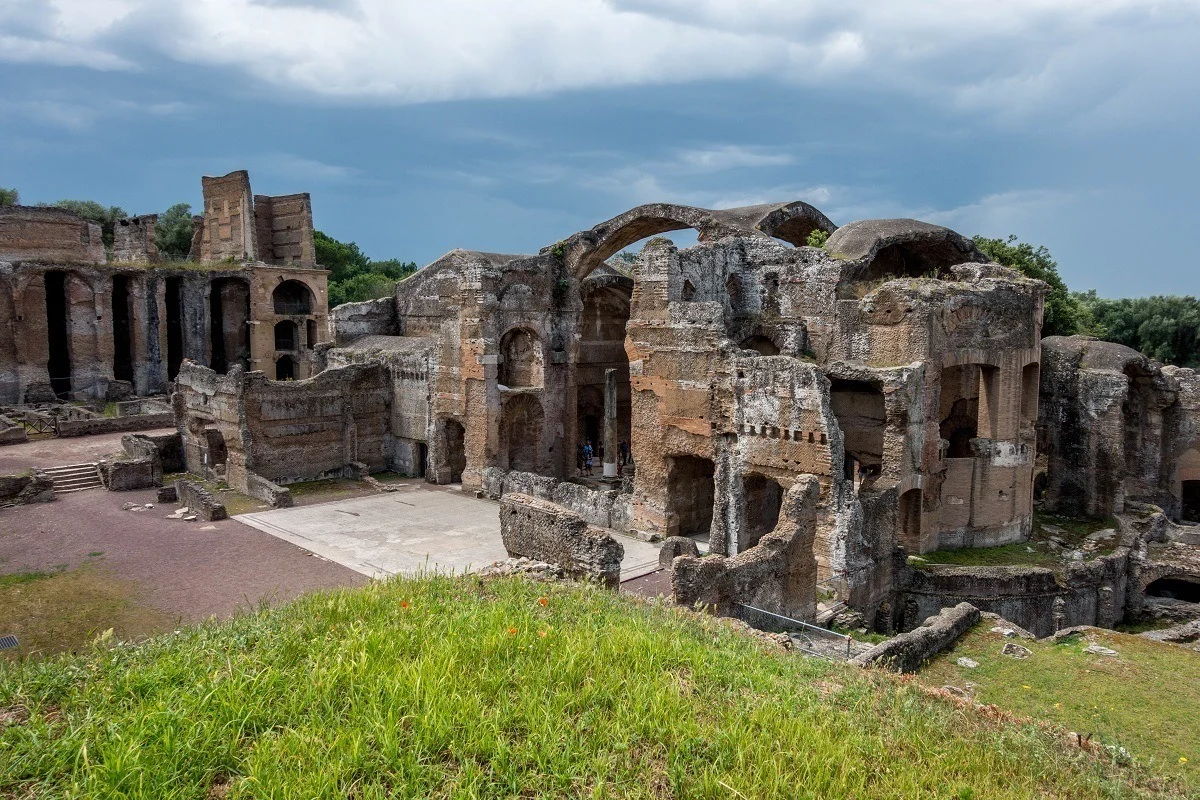
Much of the grandeur of Hadrian’s Villa has disappeared thanks to time, excavations, and travelers on the Grand Tour who took home souvenirs. But there was just enough left to give us an idea of the majesty this mini-city would have held when Hadrian was here. And when we couldn’t envision it on our own, our expert tour guide Diane from Context Travel helped us fill in the gaps and understand the importance of this architectural wonder.
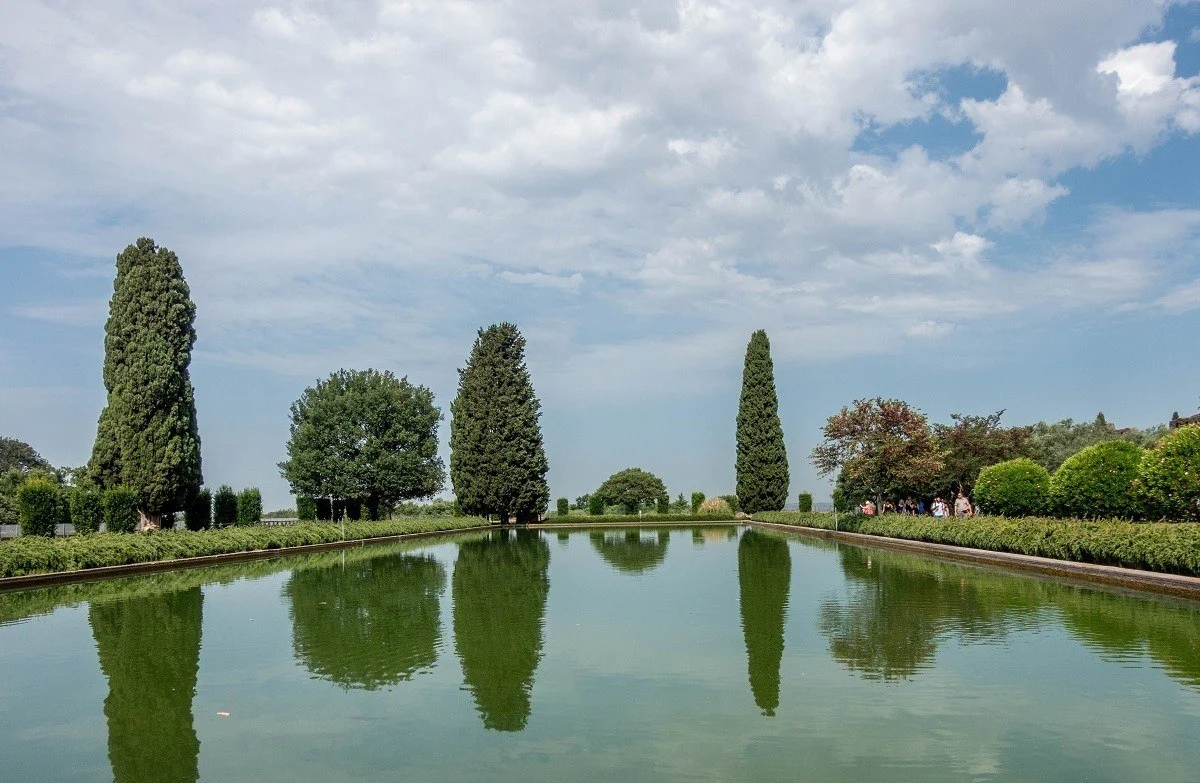
We started our tour at the Pecile, a huge garden surrounded by an arcade with a swimming pool. This functional but beautiful area provided a space for residents to take their daily walks, regardless of the weather. It was our first look at one of Hadrian’s favorite creations – one of a number of water features using the aqueducts that carried water to Rome.
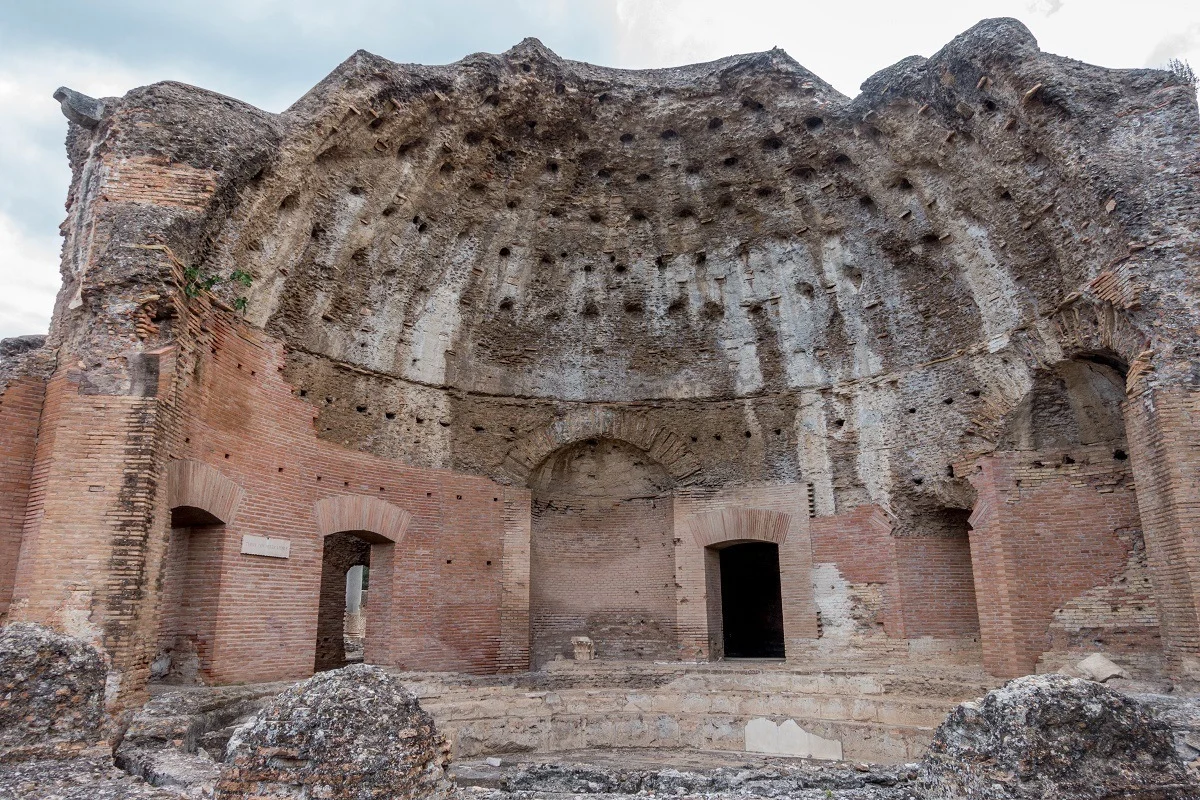
From there, we made our way to more water-related buildings, the Heliocaminus baths. A central feature of any ancient Roman settlement, the baths at Hadrian’s Villa were particularly grand. Used by the Imperial Family and its inner circle, the Heliocaminus baths had a heating system in the floor, a sauna, and pools of different temperatures. The Large Bath and Small Bath complexes deeper within the villa accommodated other residents.

Within steps of the Heliocaminus baths, we approached the Maritime Theater, a 35-room island separated from its surroundings by a moat (it was being restored during our visit). This was the emperor’s retreat within a retreat. Our guide Diane explained that Hadrian was known for his “severe mood swings” and would pull up the wooden drawbridges to escape with his thoughts here.
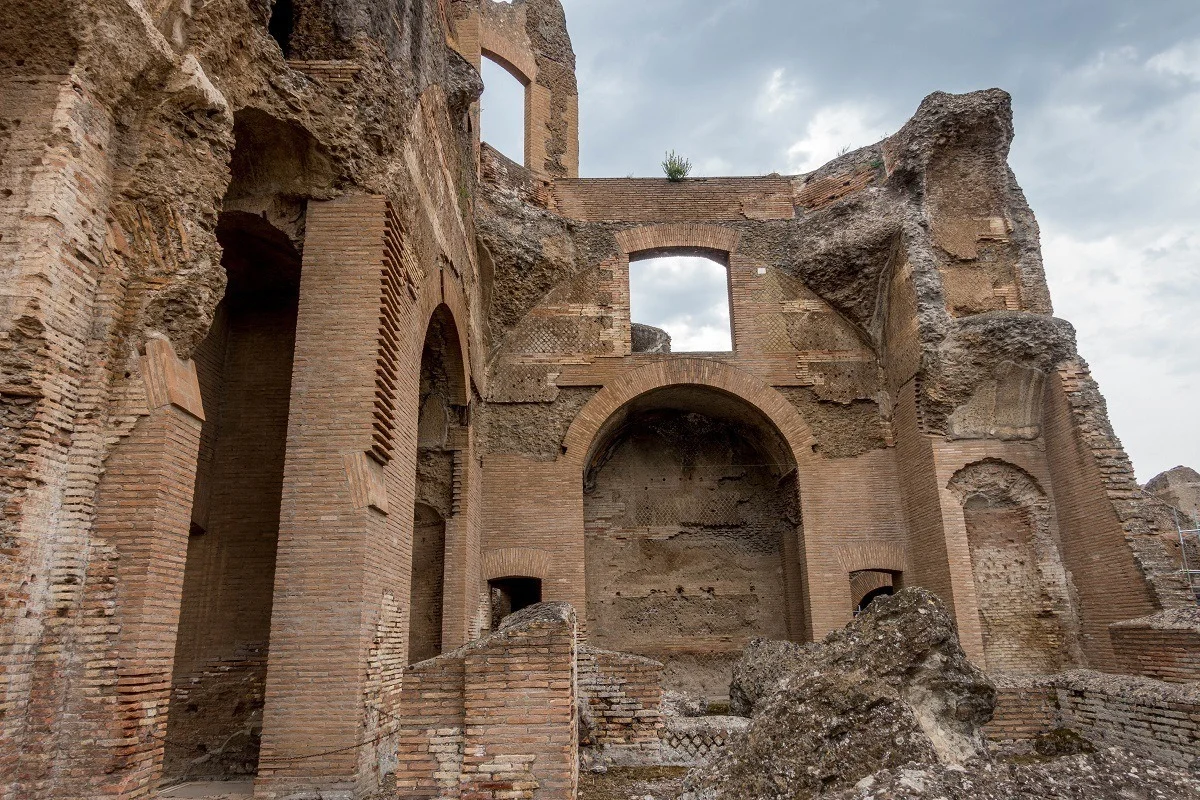
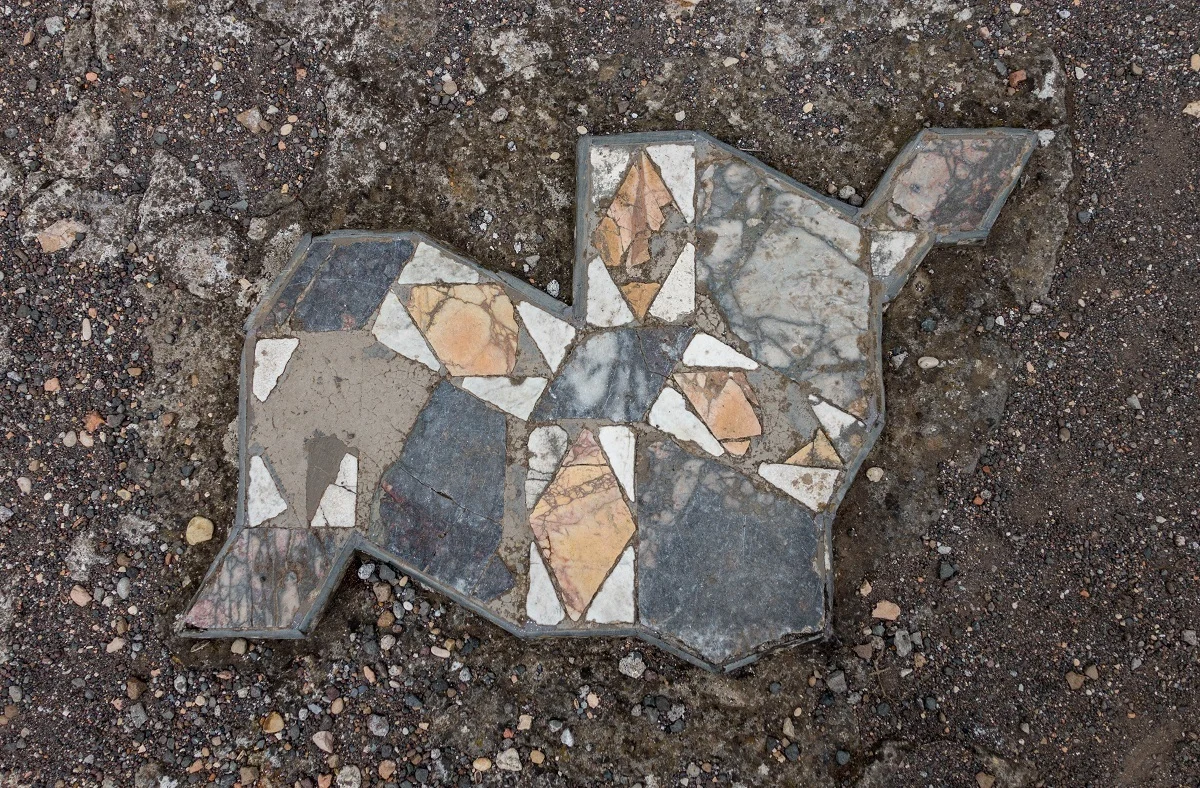
After visiting the Greek and Latin Libraries and stopping to marvel at the amazing mosaics still intact in the guest quarters, we wound our way to the highlight of the visit, the Canopus.
Hadrian was well-traveled, and he loved to incorporate elements of the architecture that inspired him on his travels into his villa. The Canopus is a prime example. The 225-foot-long pool was based on Hadrian’s visits to Egypt and Greece. It features a curved colonnade at one end and a temple at the other, and the sides are lined with statues representing different countries. The whole effect is stunning.
Even more stunning, Diane shared that Hadrian likely sat within the temple, surrounded by numerous fountains and waterfalls. It was all done to emphasize the importance of the emperor and his empire through the scale of the architecture, the magnificence of the setting, and the ability to harness the water.
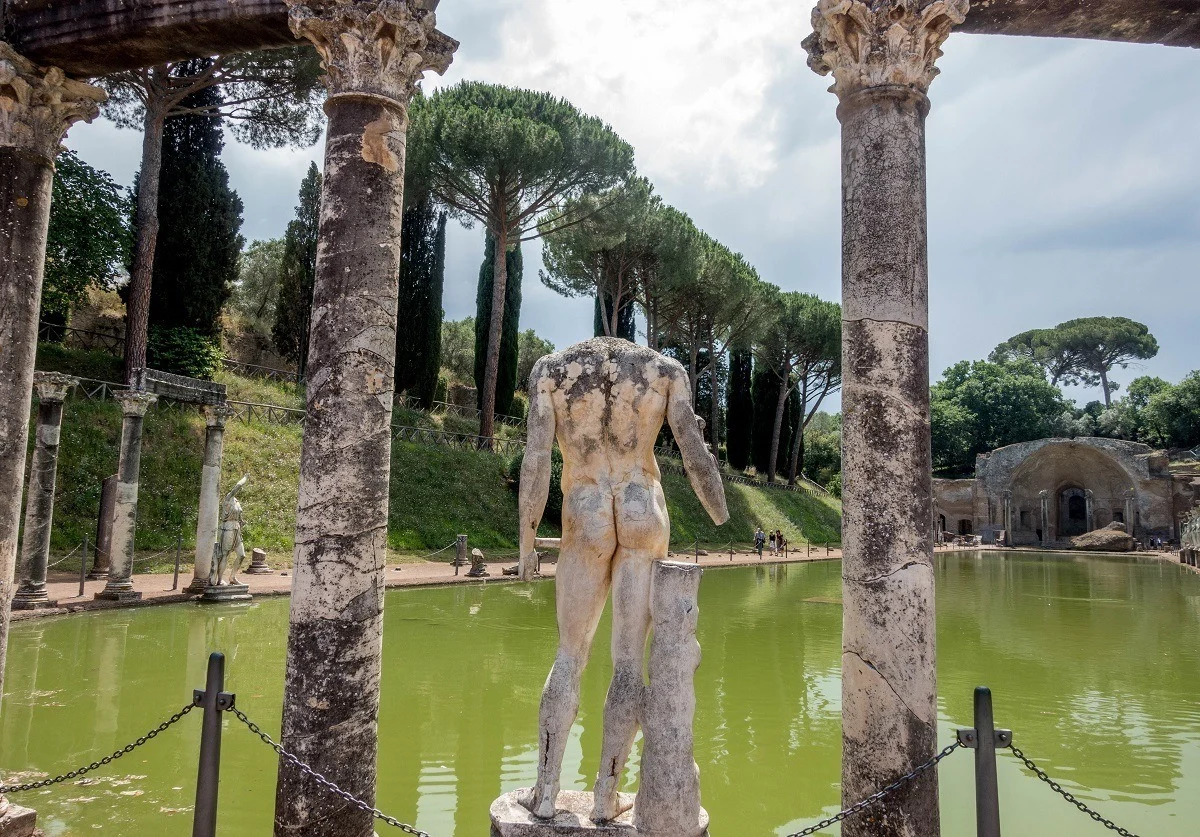
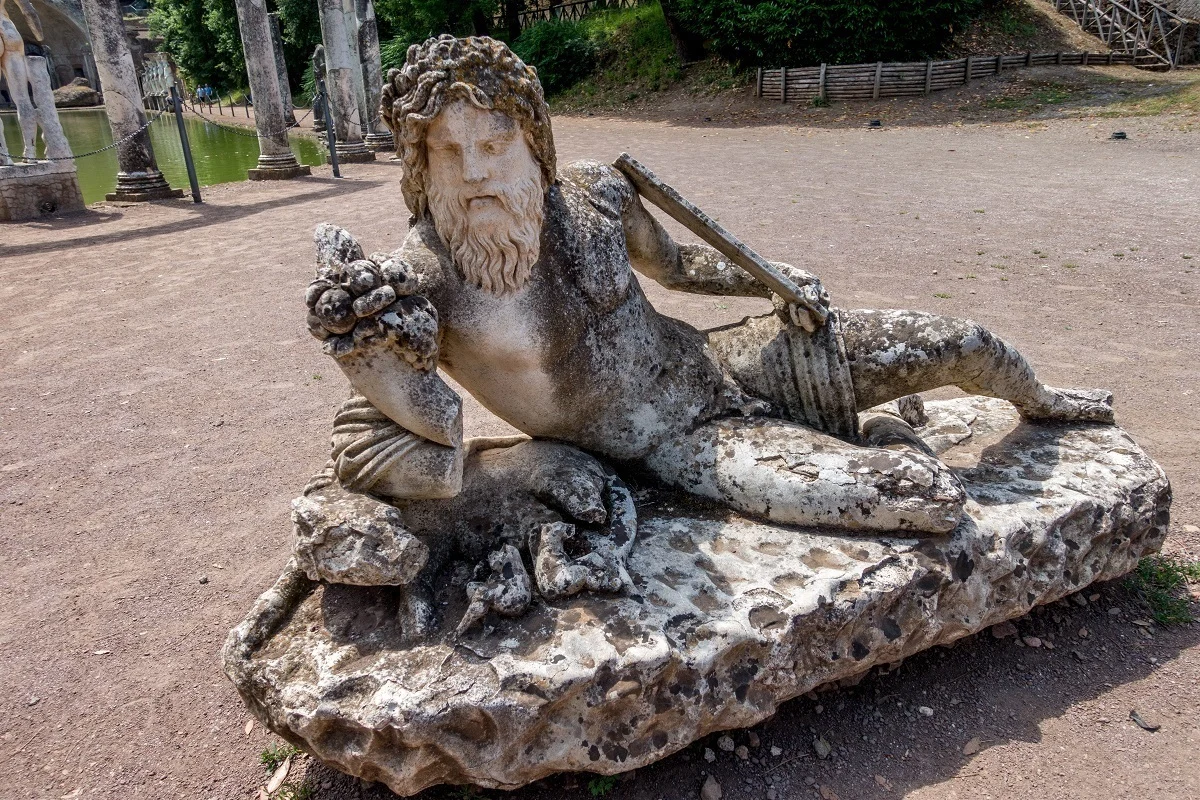
Although archaeologists, architects, and historians have been working at Hadrian’s Villa for decades, new information is uncovered all the time. Recently, a network of tunnels was discovered under the complex that would have allowed servants and slaves to stay out of sight of the nobles while moving about the villa.
Since about half the site is still unexcavated, it is likely that there are many discoveries still to come.
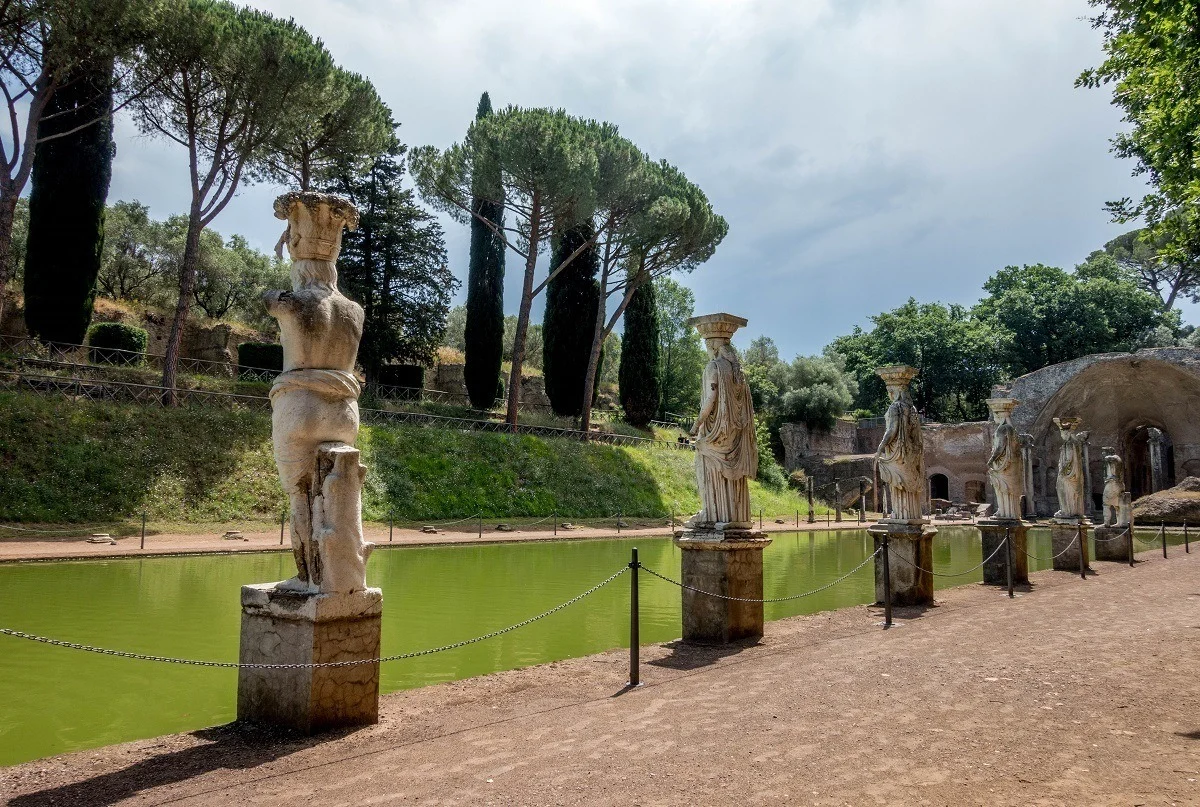
Villa d’Este in Tivoli
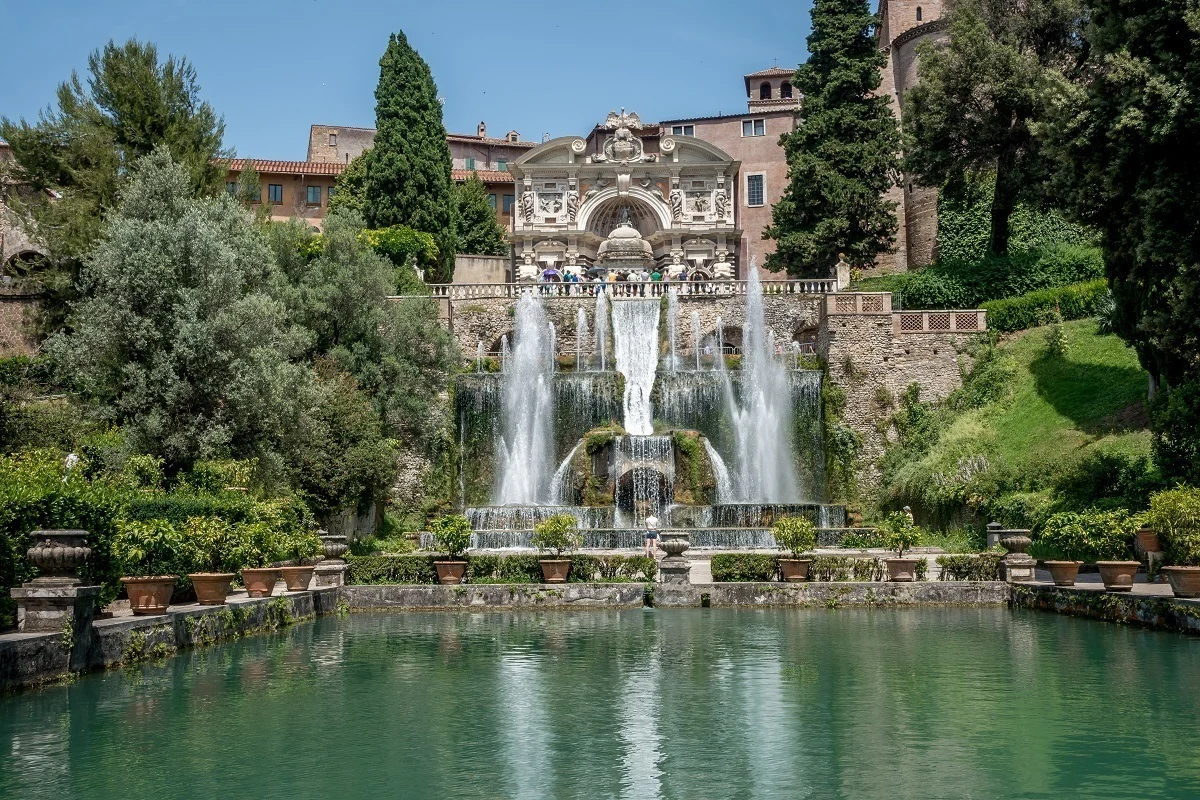
We had a quick lunch in town to save as much time as possible to visit the villa and gardens at Villa d’Este in Tivoli. Luckily, our private transportation from Context Travel dropped us off almost at the villa door so we were able to get on our way.
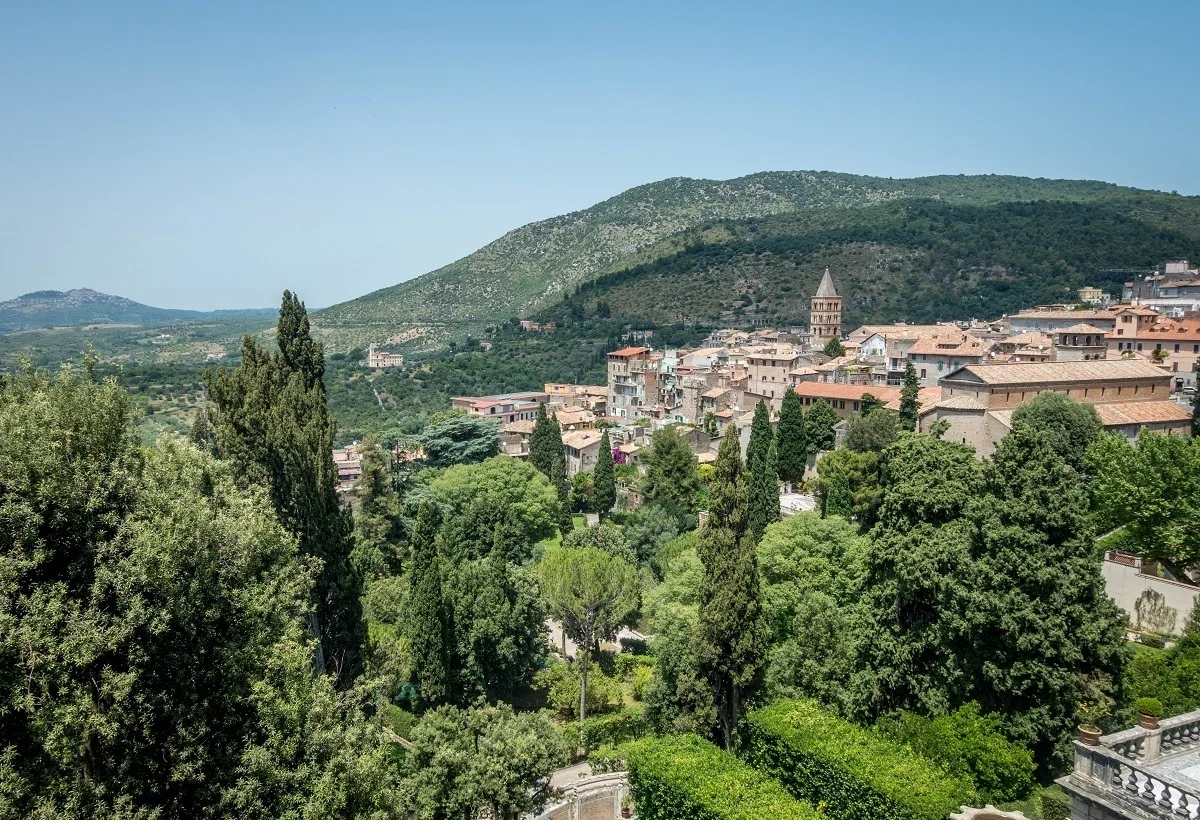
The elaborate Villa d’Este dates from the 1550s when Cardinal Ippolito d’Este decided to make some changes to the convent he was given when he became governor of Tivoli, Italy. A member of an influential family, a big spender, and a lover of the finest things in life, d’Este commissioned his architect to build a new, grand residence filled with everything his money could buy and what he could take from nearby Hadrian’s Villa. What resulted was one of the most magnificent examples of Renaissance architecture and gardens ever built.
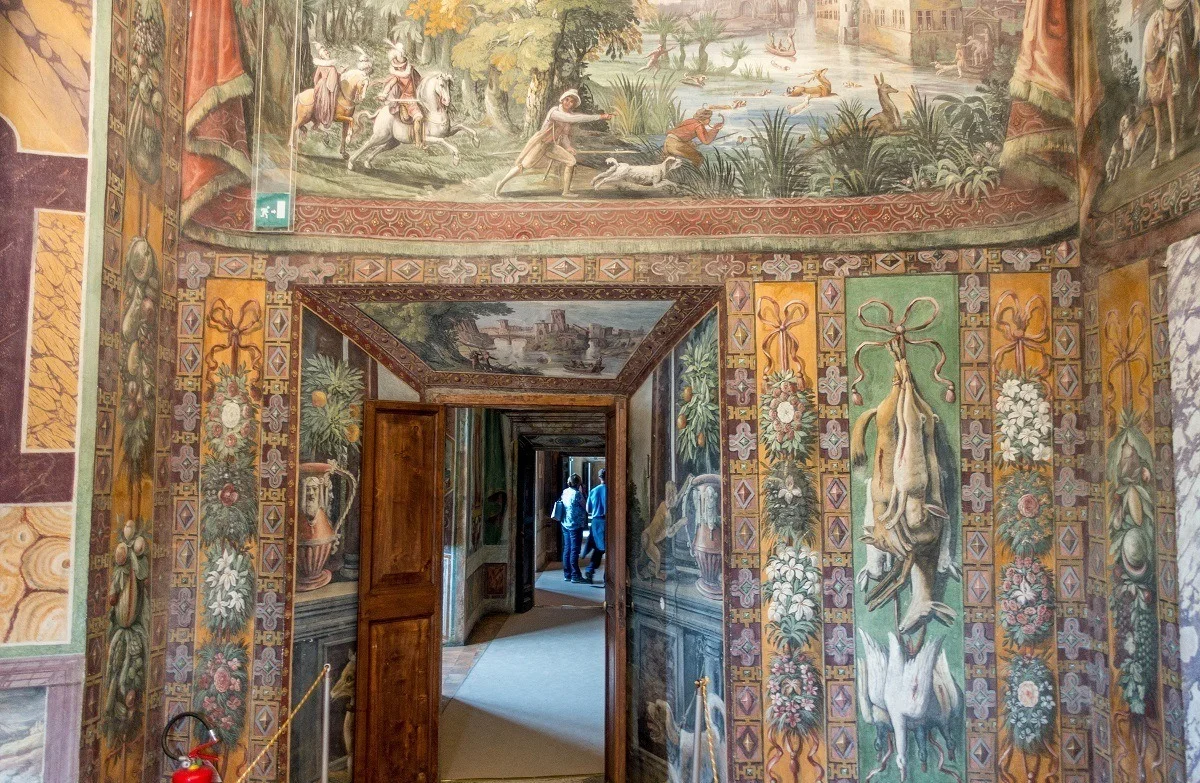
The multi-level villa is filled with bright frescoes that make them feel more like exhibit spaces than practical rooms. Despite d’Este’s role as a cardinal and his multiple attempts at becoming pope, he was more interested in the power that came with his religious offices than in the religion part of things. As a result it’s no surprise that among a bit of religious symbolism, the palace’s frescoes also feature mythology, Roman history, scenes from daily life, and homages to the d’Este family.
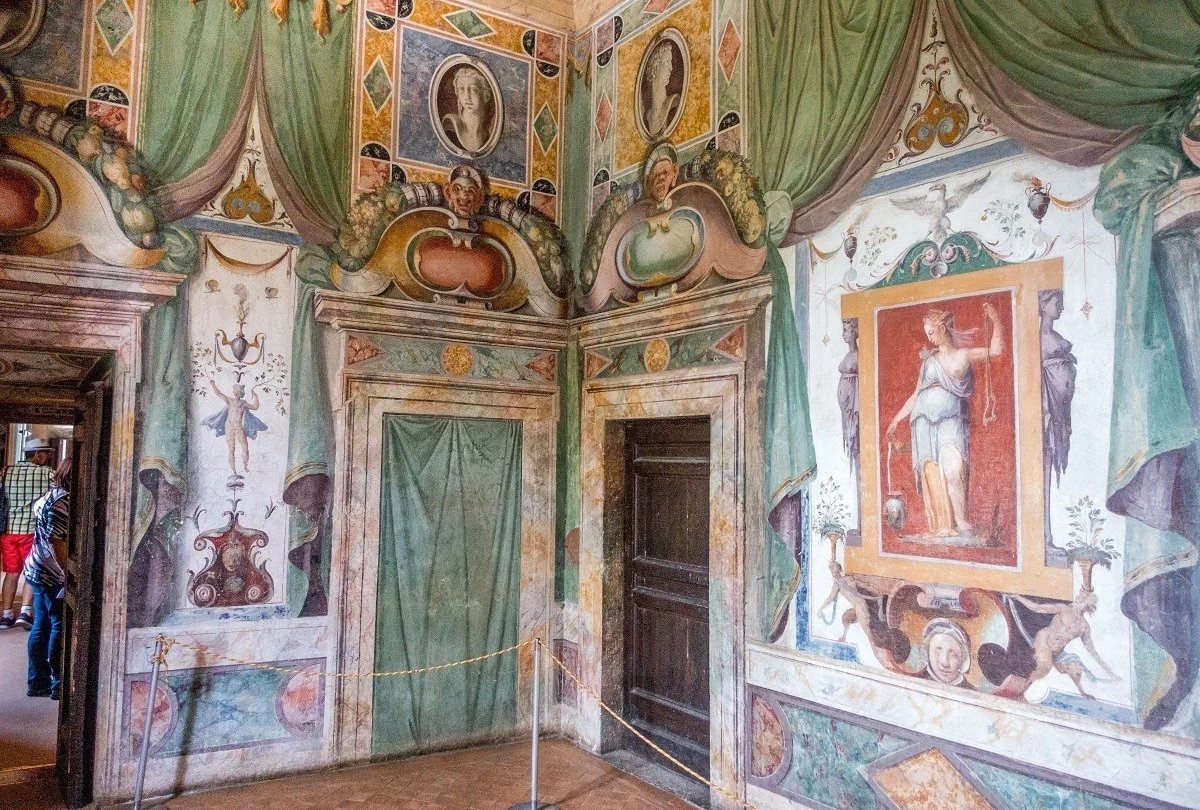
The palace itself at Tivoli’s Villa d’Este is magnificent. But we had lingered a little too long at Hadrian’s Villa asking questions of Diane as we walked among the ruins. So by the time we arrived at the Renaissance estate, we were eager to get to the highlight of Villa d’Este and the reason it was named a UNESCO World Heritage Site – its beautiful gardens.
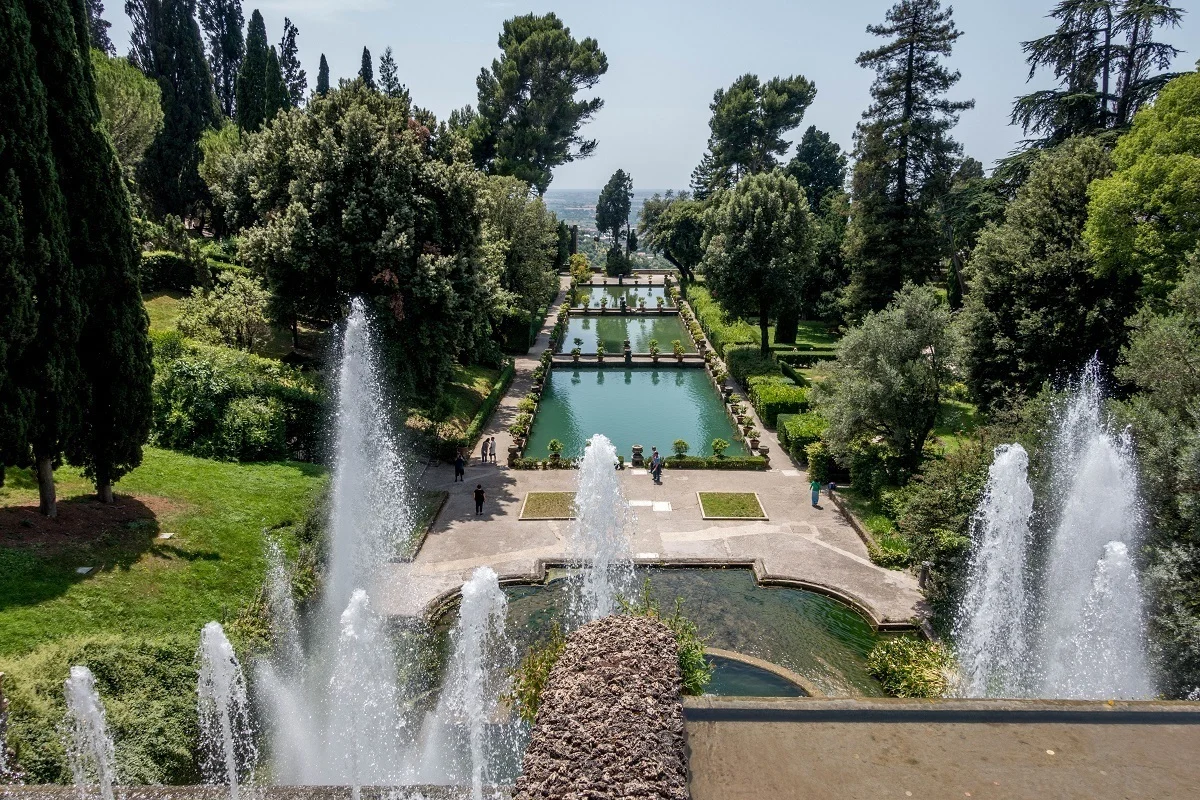
From the moment we got our first glimpse of the gardens from the palace terrace, we were in awe. The greenery, the flowers, the smell of summer jasmine, and the sound of the rushing water from hundreds of fountains combined to make us feel like we had stepped into a fairy tale.
The gardens are immaculate. Bright pink and purple flowers dot the hedges and bushes, and cyprus trees shoot up along quiet stone paths. Vines wrap the grottoes and dance along walls while smaller, potted trees line the walls of the imposing pools.
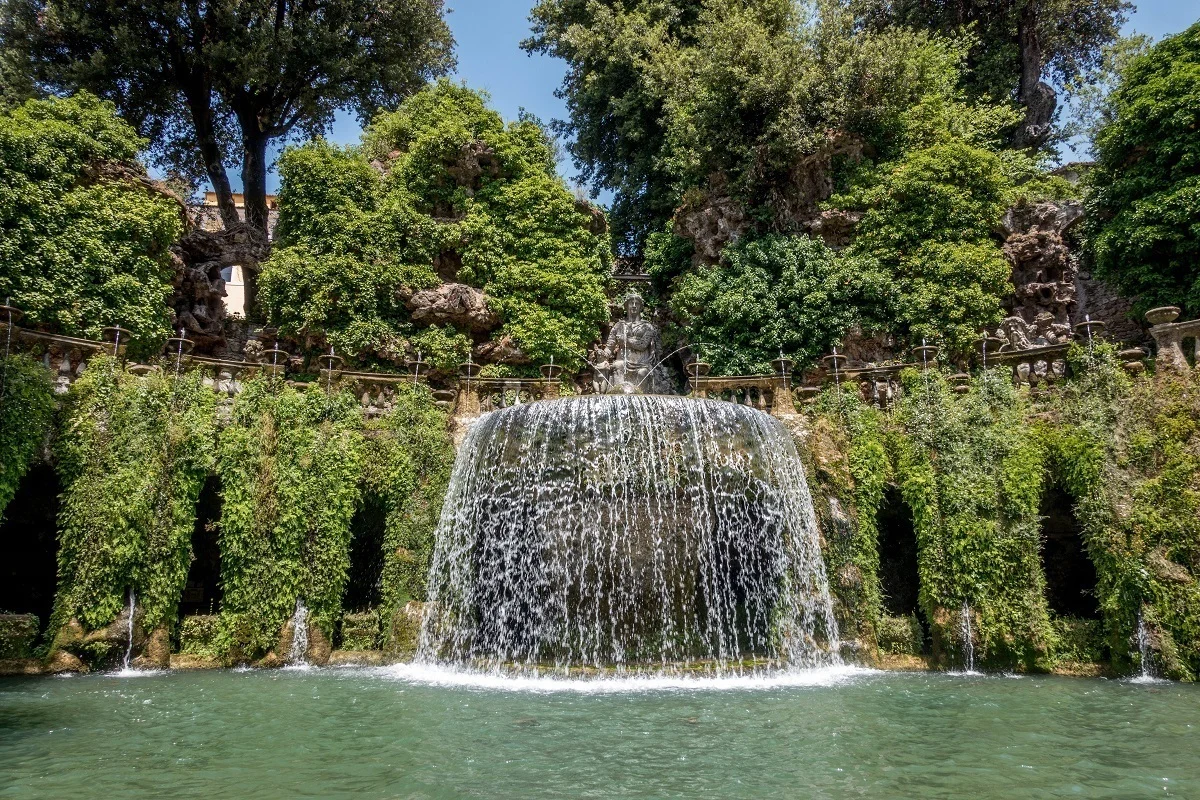
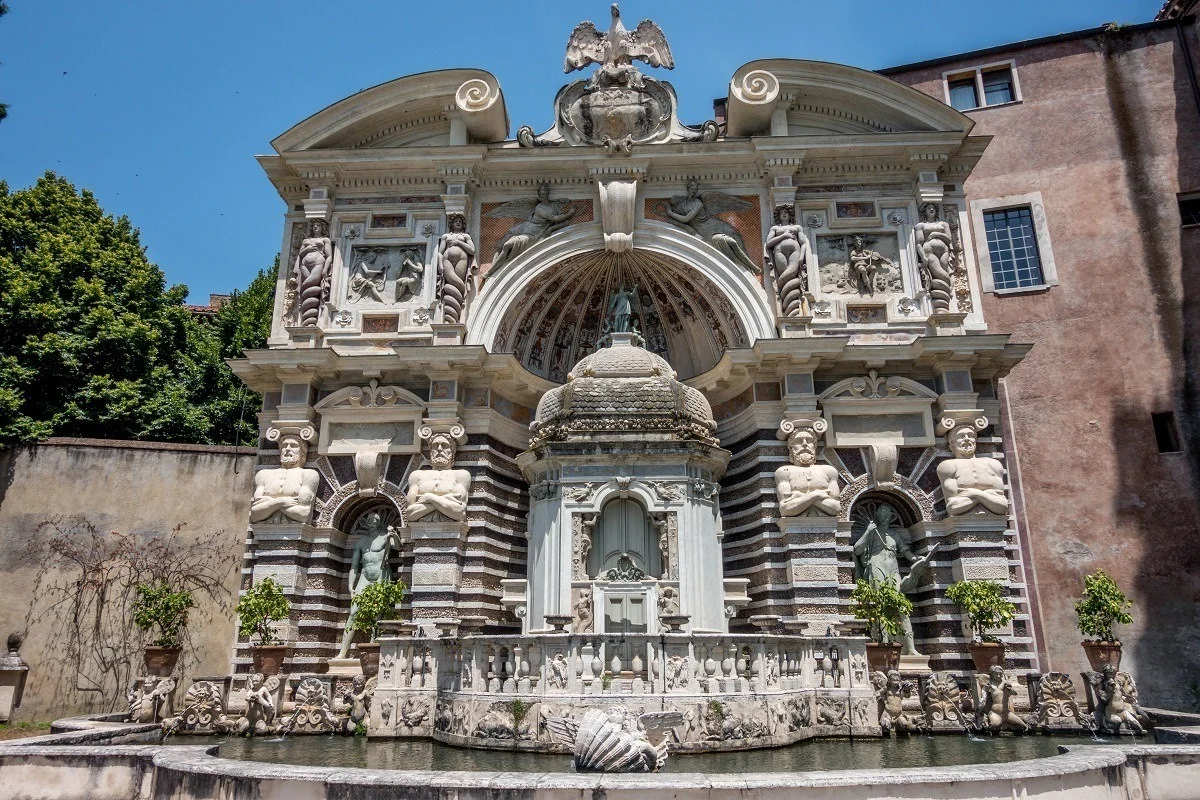
The fountains are mesmerizing, too. The Fountain of Tivoli (aka Oval Fountain) pours forth, presided over by sea nymphs. The wall of the Hundred Fountains, a marvel of the gardens during the Renaissance, is actually almost 300 spouts.
But it’s The Fountain of the Organ, which has recently been restored, that is one of the garden’s most famous features. The first of its kind, the fountain was composed of a water reservoir and hydraulic machinery that moved the organ’s 22 pipes. It’s easy to forget this was all originally constructed during the 1500s and relies primarily on gravity to create the fantastic displays.
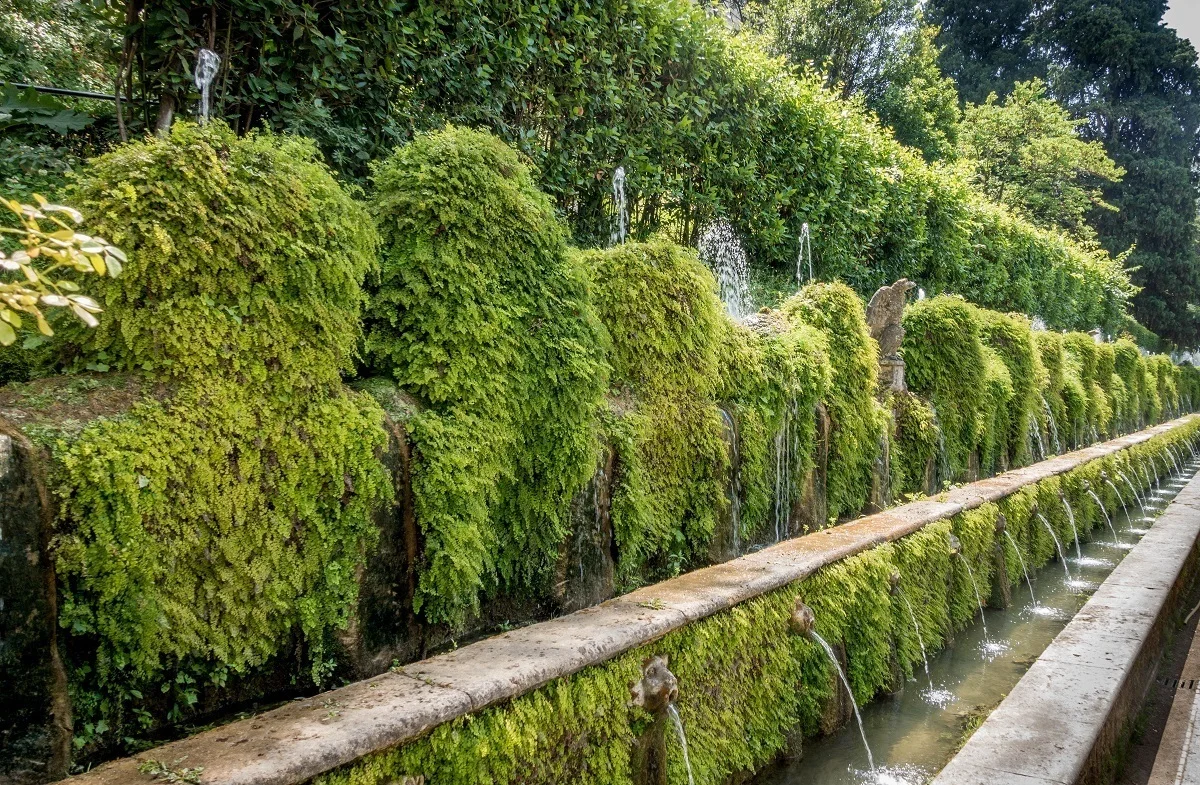
A more recent addition, the Fountain of Neptune, sits just below the Fountain of the Organ, towering over the fish ponds that seem to stretch almost to the horizon. The jets of the fountain can be seen from all over the property, making it one of the most impressive fountains in a sea of monumentally impressive fountains.
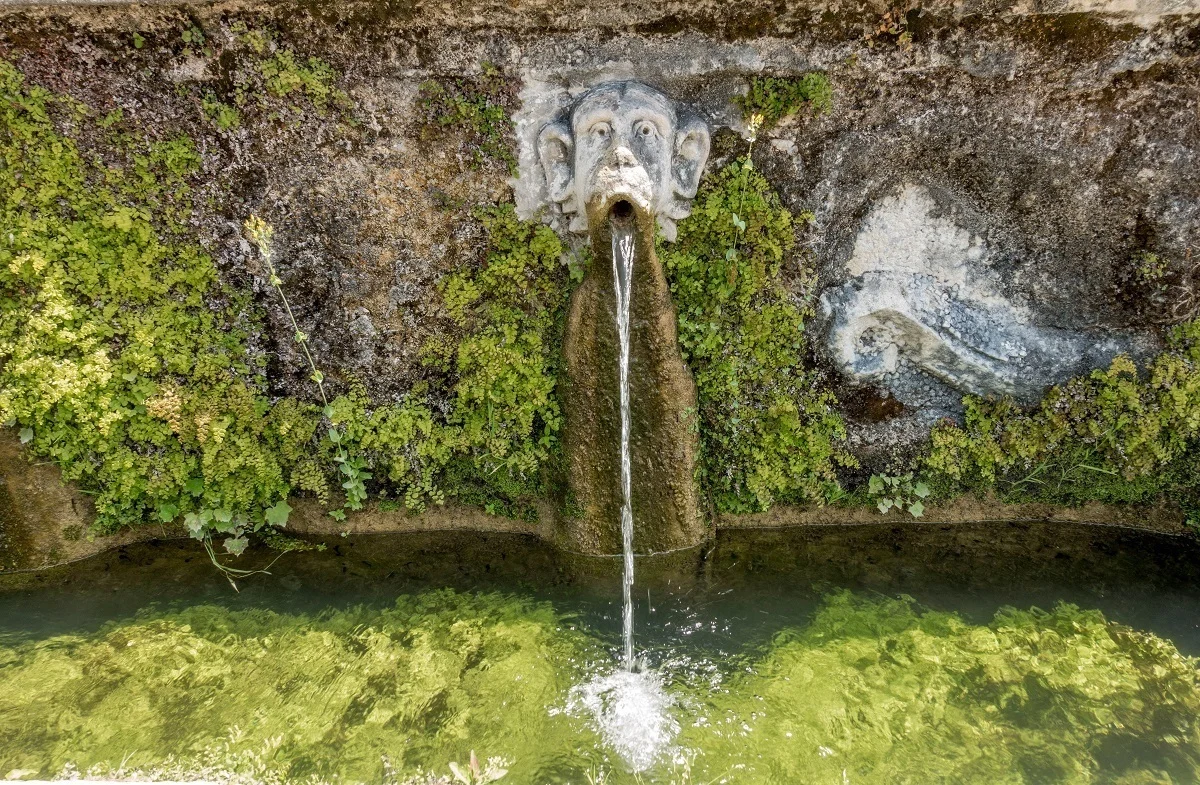
Were it not approaching 100F (38C) on the afternoon of our visit, I would gladly have wandered among the fountains and pools and paths for the rest of the day, drinking in the sweet smell of the flora and the beauty of this architectural masterpiece. But instead, it was time to return to the bustle of the capital city and dream about the suburban oasis.
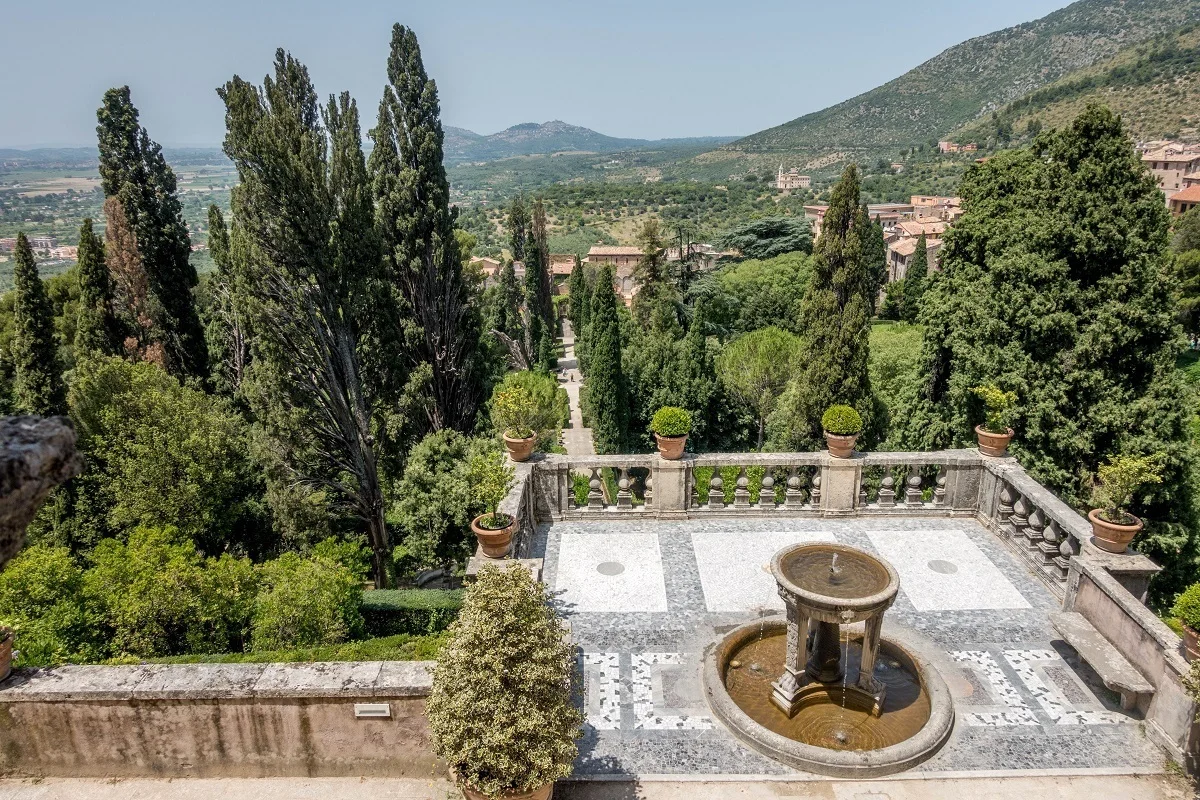
A Tour of Tivoli
When: The tour of Tivoli is typically offered on Fridays at 8:30am and lasts about 7 hours. Please consult the website for exact dates.
Cost: €310 per person for a small group; €1300 for a private tour. The cost includes the guided tour and private transportation from Roma Termini to the sites. Admission to the sites and lunch are an extra charge.
What to Bring: Comfortable shoes are a must, and water is recommended during the summer.
About Context Travel: The company focuses on very small group tours that are led by Masters and Ph.D. credentialed docents, providing both overview tours as well as intense topical immersion.
Website: See the Tivoli tour.
We were the guests of Context Travel. All opinions of the ancient and luxurious are our own.
Laura Longwell is an award-winning travel blogger and photographer. Since founding Travel Addicts in 2008, she has written hundreds of articles that help over 3 million people a year get the most out of their travel. In that time, she has visited nearly 60 countries on 5 continents, often returning to favorite destinations over and over again. She has a deep love of history, uncovering unexpected attractions, and trying all the good food a place has to offer.
In addition to Travel Addicts, Laura runs a site about her hometown of Philadelphia—Guide to Philly—which chronicles unique things to do and places to see around southeastern Pennsylvania. Her travel tips and advice appear across the web.

Tilly
Sunday 4th of September 2016
These places look right up my street! I would love to see them and indeed most of Italy! I've only been to the Northern Italian lakes and cities so far. There's just so much to see in Italy! Your posts are great and very informative. Thank you
Myra Whitlock
Thursday 25th of August 2016
Hadrian's Villa looks spectacular! Have to see this. Thanks so much!